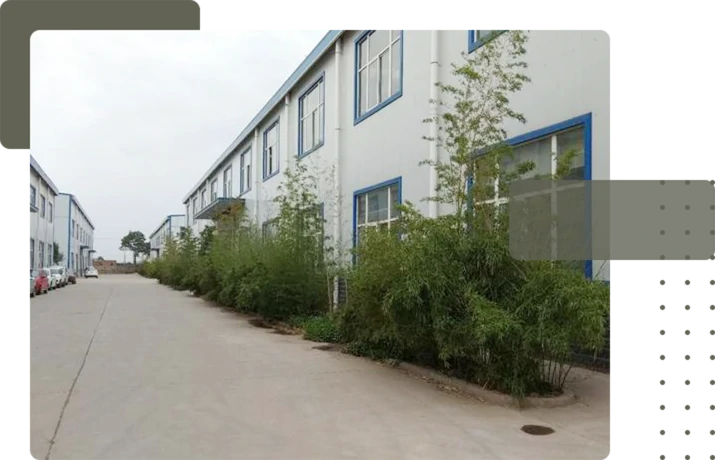Understanding the Properties and Applications of Cast Iron in Modern Manufacturing
The Versatility and Resilience of Cast Iron
Cast iron is a versatile and highly durable material that has been used for centuries in various applications, ranging from cookware to construction. Its unique properties and composition make it a favored choice for both professionals and hobbyists alike. In this article, we will delve into the history, characteristics, applications, and care of cast iron, showcasing why it remains a staple in modern manufacturing and home use.
A Brief History of Cast Iron
The origins of cast iron date back to ancient China, where it was first developed during the Han Dynasty around 500 BC. This innovative material allowed for the production of tools, weapons, and cookware that were more durable than their bronze predecessors. By the 18th century, the process of casting iron had spread to Europe and North America, leading to the large-scale production of iron products. The Industrial Revolution saw an explosion in the use of cast iron, particularly in construction and machinery, paving the way for modern engineering.
Characteristics of Cast Iron
Cast iron is an alloy primarily composed of iron, carbon (typically 2% to 4%), and silicon. The high carbon content imparts several remarkable properties to the material. One of the most significant characteristics is its ability to withstand high temperatures, making it ideal for use in cooking as well as industrial applications. The porous nature of cast iron allows it to retain heat effectively, leading to uniform cooking and browning.
Moreover, cast iron exhibits excellent durability and resistance to wear. While it can be prone to rust if not cared for properly, its longevity often outweighs this downside. With the right maintenance, cast iron cookware can last a lifetime and even be passed down through generations. Additionally, the surface of cast iron can develop a natural non-stick patina, enhancing its cooking capabilities over time.
Applications of Cast Iron
cast iron

The applications of cast iron are vast and varied. In the kitchen, cast iron skillets and Dutch ovens are beloved by chefs and home cooks alike for their ability to retain heat and sear ingredients perfectly. They are ideal for frying, baking, and slow-cooking, making them a versatile tool in any kitchen.
Beyond cookware, cast iron plays a crucial role in construction and manufacturing. Its strength makes it an ideal choice for heavy machinery, pipes, and engine blocks. The architectural world also embraces cast iron for its aesthetic and functional qualities. Many historic buildings feature cast iron facades, staircases, and columns, showcasing the material's beauty and structural integrity.
Additionally, cast iron is commonly used in the production of various consumer goods, such as outdoor grills, fire pits, and even decorative garden elements. Its ability to withstand harsh weather conditions and resist corrosion makes it a reliable choice for outdoor items.
Caring for Cast Iron
Maintaining cast iron cookware requires a bit of effort, but the rewards are well worth it. After each use, it is essential to clean cast iron with hot water and a stiff brush, avoiding soap that can strip away the seasoning. Once cleaned, it should be dried thoroughly to prevent rust. A light coating of oil can be applied to maintain the seasoning and protect the surface.
If cast iron becomes rusty, it can be restored through a process of scrubbing, re-seasoning, and careful attention. This restoration process speaks to the durability and recoverable nature of cast iron, making it an investment rather than a disposable commodity.
Conclusion
In conclusion, cast iron embodies a rich history and a wealth of applications that continue to thrive in modern society. Its unique properties, including heat retention, durability, and versatility, make it a material of choice for a wide range of industries. Whether in the kitchen or in construction, cast iron remains an essential element in our daily lives, providing both functionality and timeless charm. With proper care, cast iron cookware and products can serve generations, proving that sometimes, the best materials are those that have stood the test of time.
-
Wrought Iron Components: Timeless Elegance and Structural StrengthNewsJul.28,2025
-
Window Hardware Essentials: Rollers, Handles, and Locking SolutionsNewsJul.28,2025
-
Small Agricultural Processing Machines: Corn Threshers, Cassava Chippers, Grain Peelers & Chaff CuttersNewsJul.28,2025
-
Sliding Rollers: Smooth, Silent, and Built to LastNewsJul.28,2025
-
Cast Iron Stoves: Timeless Heating with Modern EfficiencyNewsJul.28,2025
-
Cast Iron Pipe and Fitting: Durable, Fire-Resistant Solutions for Plumbing and DrainageNewsJul.28,2025
-
 Wrought Iron Components: Timeless Elegance and Structural StrengthJul-28-2025Wrought Iron Components: Timeless Elegance and Structural Strength
Wrought Iron Components: Timeless Elegance and Structural StrengthJul-28-2025Wrought Iron Components: Timeless Elegance and Structural Strength -
 Window Hardware Essentials: Rollers, Handles, and Locking SolutionsJul-28-2025Window Hardware Essentials: Rollers, Handles, and Locking Solutions
Window Hardware Essentials: Rollers, Handles, and Locking SolutionsJul-28-2025Window Hardware Essentials: Rollers, Handles, and Locking Solutions -
 Small Agricultural Processing Machines: Corn Threshers, Cassava Chippers, Grain Peelers & Chaff CuttersJul-28-2025Small Agricultural Processing Machines: Corn Threshers, Cassava Chippers, Grain Peelers & Chaff Cutters
Small Agricultural Processing Machines: Corn Threshers, Cassava Chippers, Grain Peelers & Chaff CuttersJul-28-2025Small Agricultural Processing Machines: Corn Threshers, Cassava Chippers, Grain Peelers & Chaff Cutters












